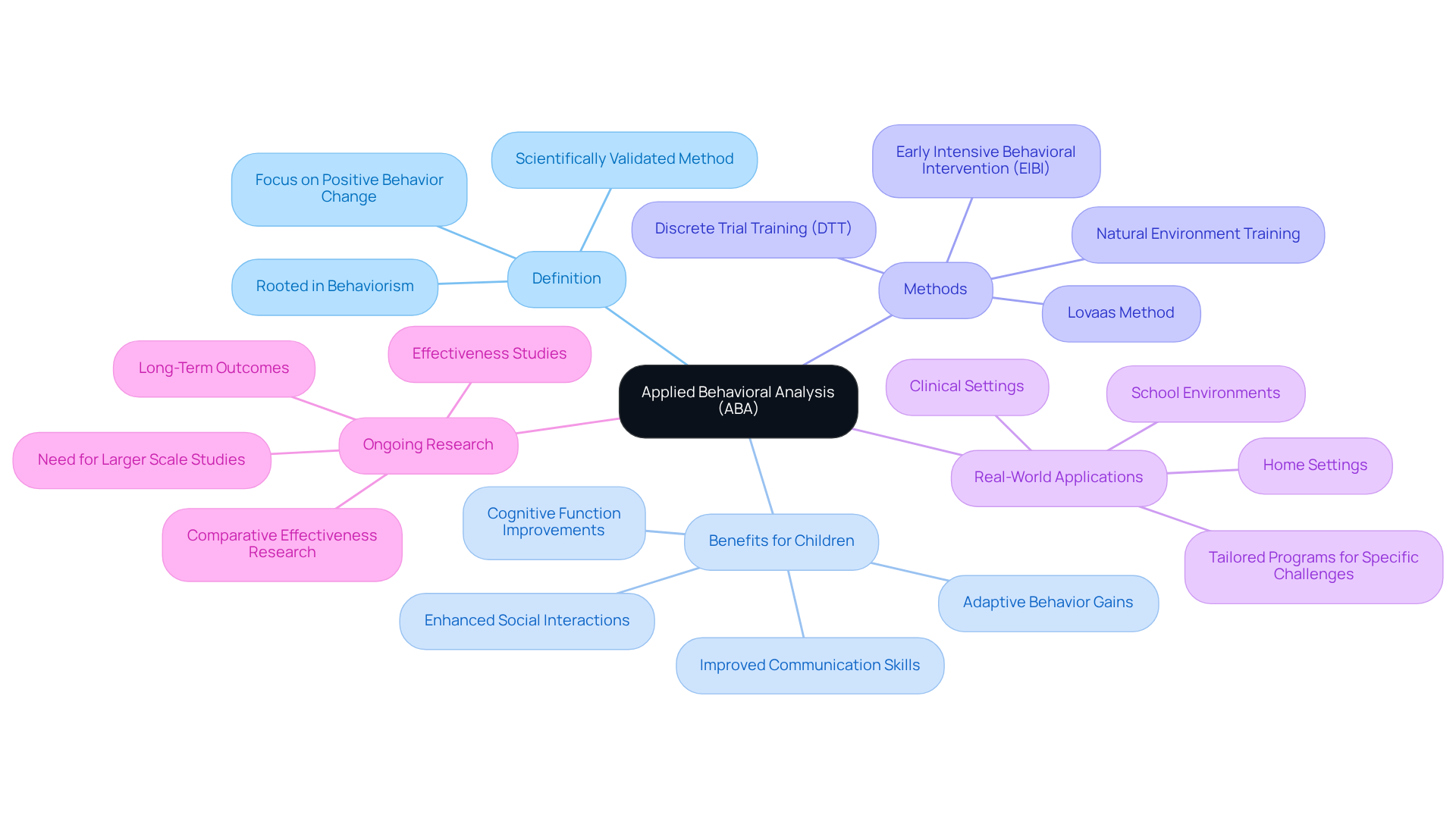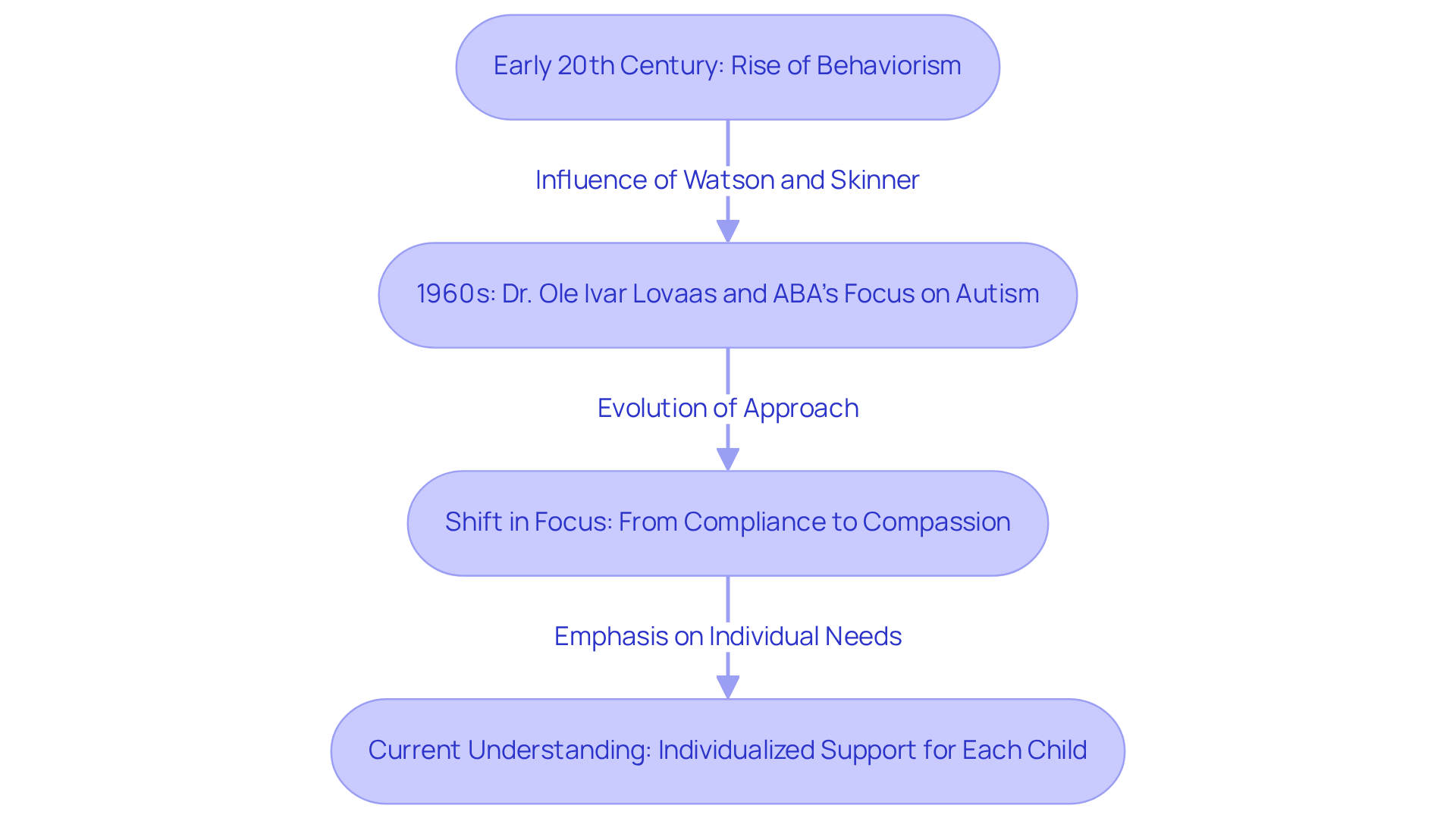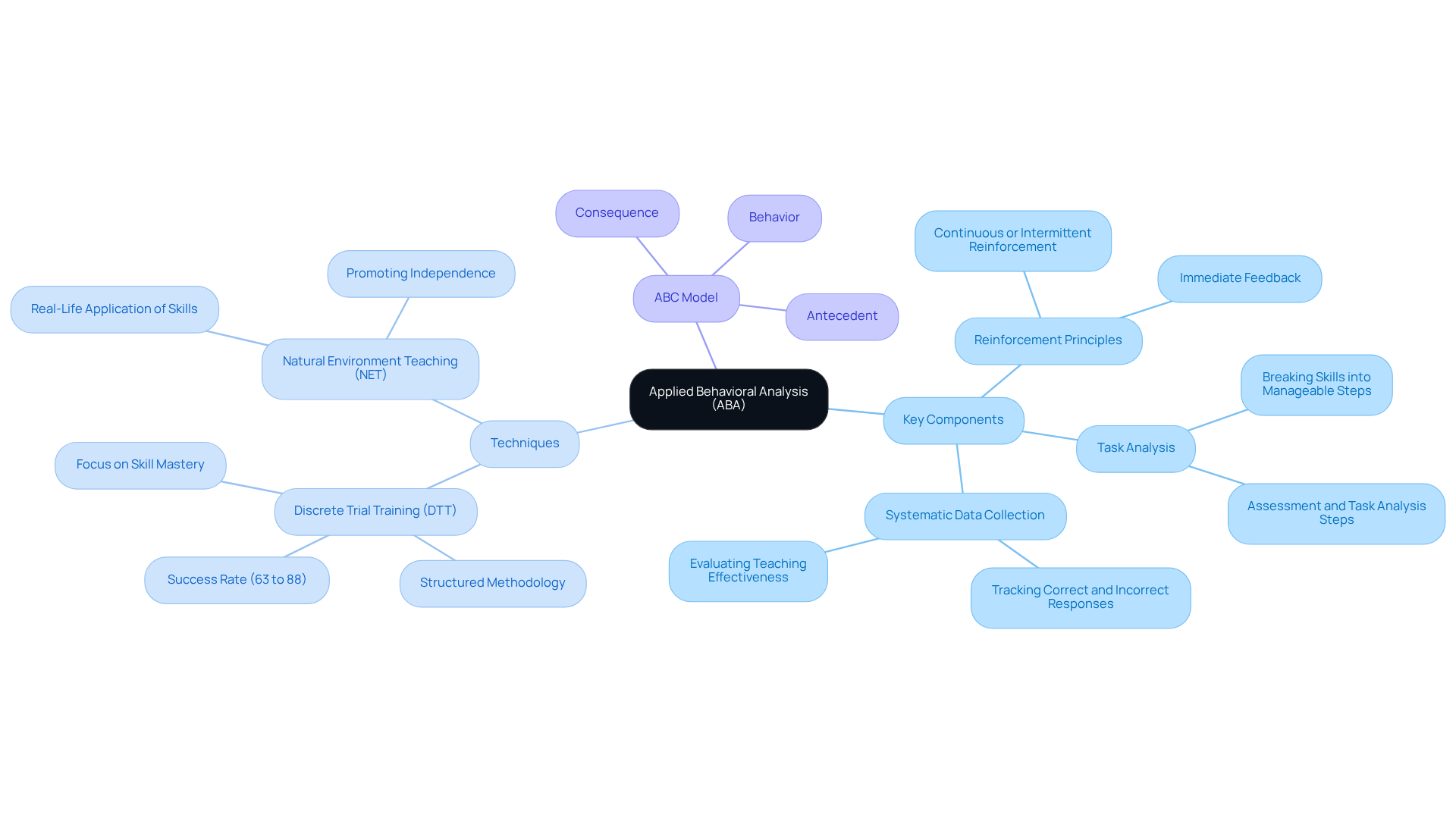Overview
Applied Behavioral Analysis (ABA) is a scientifically validated method that seeks to understand and modify behaviors, offering significant benefits for children with autism and developmental disorders. This approach employs structured interventions, such as reinforcement techniques and task analysis, to enhance positive behaviors and skills. Through empirical research and real-world applications, ABA demonstrates its effectiveness in fostering growth and development. Parents, if you're navigating the challenges of autism, consider exploring ABA as a supportive resource for your child's journey.
Introduction
Applied Behavioral Analysis (ABA) shines as a beacon of hope for families navigating the complexities of autism and developmental disorders. This scientifically validated approach not only seeks to understand behavior but also provides structured interventions that nurture positive change and skill acquisition. As parents and caregivers explore the transformative potential of ABA, they may find themselves asking:
- What are the key components and techniques that make this method so effective?
- How has it evolved to meet the unique needs of each child?
Understanding ABA can feel overwhelming, but it’s essential to recognize its profound impact. This method is designed to support children in developing crucial skills while addressing their individual challenges. As you delve deeper into ABA, consider how it can be tailored to your child's specific needs, fostering an environment where they can thrive.
We invite you to join us on this journey of discovery and support. Share your thoughts and experiences in the comments below, and let’s create a community where we can learn from one another.
Define Applied Behavioral Analysis (ABA)
What is applied behavioral analysis is a scientifically validated method designed to understand and change behaviors in a compassionate way. Rooted in behaviorism, ABA operates on the understanding that behaviors are learned and can be transformed through structured interventions. This nurturing approach focuses on enhancing positive behaviors while reducing those that are less desirable, employing strategies grounded in empirical research.
For many parents, ABA offers hope, especially for children with autism and other developmental disorders. It not only aids in acquiring new skills but also enriches social interactions, making a significant difference in their lives. Recent studies reveal that early and intensive ABA interventions can lead to remarkable improvements in language development, cognitive function, and adaptive behavior. For instance, children participating in Early Intensive Behavioral Intervention (EIBI) often show considerable progress in communication and social skills. Evidence suggests that those who engage in at least 25 hours of therapy each week experience the most significant advancements.
Real-world applications of ABA include tailored programs that address specific behavioral challenges. One notable example is the Lovaas method, which has successfully helped young individuals reach typical intellectual functioning. This approach not only fosters growth but also instills a sense of normalcy and achievement.
Overall, what is applied behavioral analysis is widely recognized as a gold-standard intervention for autism therapy. Ongoing research continues to reinforce its effectiveness across various settings and populations, providing reassurance to families seeking support. If you’re a parent looking for guidance, consider exploring ABA resources that can empower you and your child on this journey.

Trace the Origins and Evolution of ABA
The journey of what is applied behavioral analysis (ABA) began in the early 20th century with the rise of behaviorism, a movement led by influential psychologists like John B. Watson and B.F. Skinner. Fast forward to the 1960s, when Dr. Ole Ivar Lovaas brought attention to what is applied behavioral analysis, a therapy designed to support children with autism by using behavioral principles to foster language and social skills.
Over the years, the question of what is applied behavioral analysis has transformed significantly, shifting from an emphasis on compliance and control to a more compassionate approach that highlights the power of positive reinforcement and tailored interventions. This evolution mirrors a growing understanding of autism and underscores the necessity of customizing strategies to meet the unique needs of each child.
As we continue to learn and adapt, it's vital to remember that every child’s journey is different, and support should reflect that individuality.

Examine Key Components and Techniques of ABA
What is applied behavioral analysis (ABA) includes key components such as reinforcement principles, task analysis, and systematic data collection, all of which play a vital role in supporting children's development. Techniques like Discrete Trial Training (DTT) and Natural Environment Teaching (NET) are particularly significant in this field. DTT stands out because it breaks down complex skills into manageable steps, fostering focused learning and mastery before moving on to more challenging tasks. Research highlights that DTT can lead to impressive improvements in communication and social skills, with studies showing a remarkable 63% to 88% success rate among children who engage in this approach.
On the other hand, NET focuses on what is applied behavioral analysis by applying learned skills in real-life situations, thereby enhancing the generalization of these abilities beyond structured environments. This method nurtures independence and practical application, making it essential for holistic growth. Additionally, what is applied behavioral analysis includes the ABC model (Antecedent-Behavior-Consequence), which is crucial for understanding the triggers and outcomes of behaviors, allowing practitioners to tailor interventions effectively. Recognizing the reasons behind actions is key to modifying behavior and teaching new skills. By thoughtfully implementing these techniques, practitioners can ensure that interventions are both impactful and measurable.
DTT is usually conducted in a distraction-free environment, which is crucial for effective learning. It emphasizes mastery of skills before progressing to more complex tasks, ensuring a solid foundation for children. As you explore these methods, remember that each child’s journey is unique. Engaging with these strategies can make a significant difference in their development, and your support as a parent is invaluable in this process.

Explore Practical Applications and Examples of ABA
What is applied behavioral analysis (ABA) is a powerful approach that is widely embraced in schools, homes, and clinics to support individuals with autism and other developmental disorders. Imagine a classroom where educators use ABA methods to nurture positive behaviors, like raising hands to speak, while gently guiding students away from disruptive actions. In the comforting space of home, parents can implement strategies such as token economies, encouraging their children to engage in desired behaviors, like completing homework.
Consider the inspiring story of a child learning to communicate through the Picture Exchange Communication System (PECS). This real-life example beautifully illustrates how ABA can foster essential skills and significantly enhance quality of life. By understanding and applying these methods, parents and educators can create a nurturing environment that promotes growth and development for children with unique needs. If you’re interested in learning more about what is applied behavioral analysis and its ability to support your loved ones, please reach out for resources and guidance.
Conclusion
Applied Behavioral Analysis (ABA) is a transformative approach that not only seeks to understand but also to modify behaviors through scientifically validated methods. This compassionate framework shines particularly for children with autism and developmental disorders, highlighting the importance of tailored interventions that encourage positive behaviors while minimizing less desirable ones. The evolution of ABA reflects a beautiful shift towards a more nurturing and individualized strategy, ensuring that each child's unique needs are lovingly met.
In this article, we explored key insights into ABA, including its origins in behaviorism, foundational techniques like Discrete Trial Training and Natural Environment Teaching, and real-world applications that vividly illustrate its effectiveness. We highlighted the significance of early and intensive interventions, showcasing how ABA can lead to substantial improvements in communication, social skills, and overall quality of life for children.
The insights shared on ABA not only underscore its importance as a gold-standard intervention for autism therapy but also invite parents and educators to engage actively with these methods. By exploring ABA resources and implementing its techniques, you can foster an environment that nurtures growth and development, ultimately empowering children with the skills they need to thrive. Together, let’s take these steps to support our children in their journey toward a brighter future.
Frequently Asked Questions
What is Applied Behavioral Analysis (ABA)?
Applied Behavioral Analysis (ABA) is a scientifically validated method designed to understand and change behaviors in a compassionate way, focusing on enhancing positive behaviors while reducing less desirable ones through structured interventions.
How does ABA help children with autism?
ABA helps children with autism by aiding in the acquisition of new skills and enriching social interactions, leading to significant improvements in language development, cognitive function, and adaptive behavior.
What is the impact of early and intensive ABA interventions?
Early and intensive ABA interventions, such as Early Intensive Behavioral Intervention (EIBI), can lead to remarkable improvements in communication and social skills, particularly for children who engage in at least 25 hours of therapy each week.
Can you provide an example of a real-world application of ABA?
One notable example of ABA application is the Lovaas method, which has successfully helped young individuals reach typical intellectual functioning, fostering growth and a sense of normalcy and achievement.
Why is ABA considered a gold-standard intervention for autism therapy?
ABA is recognized as a gold-standard intervention for autism therapy due to its effectiveness across various settings and populations, supported by ongoing research that reassures families seeking support.




